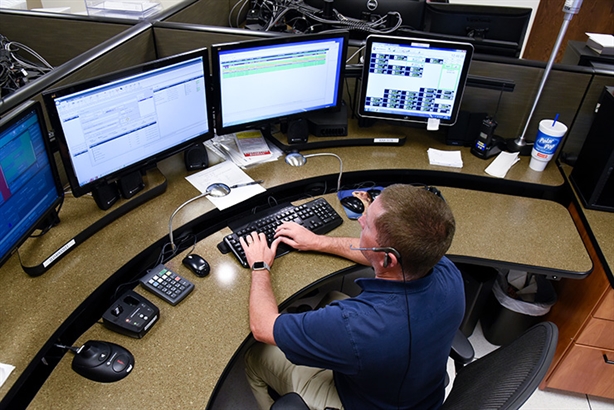How Dispatchers Aided Rescue Efforts During Hurricane Harvey
February 05, 2018 by Dana Rasmussen

On a typical day in the neighboring communities of Nederland, Port Neches, and Groves, Texas, three dispatch operators are responsible for answering and routing all 911 calls in the area – around 60 to 70 calls each day.
That all changed in the fall of 2017.
By August 30, 2017, Hurricane Harvey had shifted course in the Gulf of Mexico and unexpectedly poured 64.51 inches of rain on the communities, most of which came down in one day.
Fighting heavy rains and historic flooding, two additional operators were brought in to manage the call volume. Working night and day for five days, the dispatchers managed the more than 3,200 calls from residents in their communities and around the region.
This storm was Chief Paul Lemoine's fourth hurricane with the Port Neches Police Department, and, in his experience, communication has always been key to a successful operation.
His department faced the challenges of technology that couldn't keep up during previous storms. With no way to take outside calls because of failed communication systems, officers had previously been forced to rely on word-of-mouth communication, he said. In the past, flooding neighborhoods with volunteers and officers going door-to-door was necessary to ensure everyone got the help they needed.
But, not this time.
Throughout the weather event, dispatchers continually relayed pertinent information about people in need and physical road blocks to officers in the field using walkie talkies and cell phones.
"We all had houses that had flooded, and we were all actively doing water rescues for several hours at a time, and we were being inundated with rescue requests," Lemoine said. "We really relied on our dispatchers to relay that information to keep us from wasting time and continually moving forward. It was the middle of the night. We were up to our necks in water, getting in and out of boats, so it was really a lifesaver for us."
When the rain stopped, the sun finally reappeared, and the flooding started to recede, dispatchers helped direct officers to find and rescue more than 180 people. Empowered with timely, accurate information and a connection that lasted through the storm, no lives were lost and no officer was injured in the field.